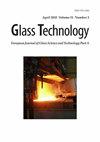利用测量支撑剂导电性新方法的实验室结果来模拟油藏模拟中的水力裂缝
IF 0.3
4区 材料科学
Q4 MATERIALS SCIENCE, CERAMICS
Glass Technology-European Journal of Glass Science and Technology Part a
Pub Date : 2022-07-11
DOI:10.47672/ejt.1117
引用次数: 0
摘要
目的:水力压裂过程是为了在岩石中产生新的裂缝,以增加现有裂缝的尺寸、范围和连通性。美国石油协会(API)开发了两种测试方法,用于在实验室环境中测量支撑剂的导电性,即;短期支撑剂导电性测试程序和长期支撑剂导电性测试方法。然而,这些实验室测试方法产生了不一致的结果,即使使用相同的支撑剂和程序,从一个测试到另一个测试的显著方差系数为±80%。因此,这项工作旨在利用蒙大拿理工大学的导电性测量改进的实验室方差来模拟储层模拟中的水力裂缝,以评估其表现或与现场表现进行比较。方法:蒙大拿理工大学的研究人员开发了新的支撑剂导电性测试方法,以降低这种差异。这些测试程序显示出更加一致的结果,陶瓷支撑剂和砂型支撑剂的平均方差分别为±7.6%和±14.3%。这些测试都是在实验室条件下进行的,因此这项工作使用了从Willison Bakken地层获得的现场生产数据和任意高渗透率值作为裂缝模型的基准,这些模型是根据蒙大拿理工大学测量支撑剂导电性测试的新方法建立的。研究结果:在6500 psi闭合应力下,砂层和陶瓷层的电导率分别为2133.5 md-ft和4870.3 md-ft。与未压裂模型相比,高渗透率模型的采收率增加了42%。同样,实验砂模型和陶瓷模型的采收率分别比未压裂模型增加12.9%和33%。实验砂模型、实验陶瓷模型和高渗透模型的无因次裂缝导流率分别为1246、2844和233577。通常,实验室电导率高估了现场性能,然而,由于研究中使用的Bakken井的孔隙度和渗透率极低,以及所使用的软件包的局限性,这项工作并没有显示出使用实验室数据模拟裂缝的改进。低渗透油藏的模拟仍然是一个发展中的领域,因为传统的模型往往不能产生与物理相匹配的结果。随着这类油藏模拟方法的改进,新的裂缝导流性实验室数据可能有助于建模。对理论、实践和政策(建议)的独特贡献:应在Petrel中进行敏感性分析,从实验室裂缝导流率开始,到无限裂缝导流率结束。这将有助于确定正确测量裂缝导电性的效果。同样,在Petrel中,使用格子网格等更好的技术可以更好地评估每个裂缝的性能,最后,建议在未来的工作中使用更多的井数据和相关的孔隙度和渗透率测量数据。本文章由计算机程序翻译,如有差异,请以英文原文为准。
Using Laboratory Results from New Methods of Measuring Proppant Conductivity to Model Hydraulic Fractures in Reservoir Simulation
Purpose: Hydraulic fracturing processes are conducted to create new fractures in a rock to increase the size, extent, and connectivity of existing fractures. The American Petroleum Institute (API) developed two testing procedures for measuring conductivity of proppants in a laboratory setting, namely; the Short-Term Proppant Conductivity Testing Procedure and Long-Term Proppant Conductivity Testing Method. However, these laboratory testing methods have produced inconsistent results, with a significant coefficient of variance of ±80% from one test to the other even with the use of the same proppants and procedures. Thus, this work seeks to use an improved laboratory variance from Montana Tech conductivity measurements to model hydraulic fractures in reservoir simulation to evaluate how it performs or compares with field performance.
Methodology: Montana Tech researchers have developed new proppant conductivity testing methods to lower this variance. These testing procedures showed more consistent results with an average variance of ±7.6% and ±14.3% in ceramic and sand proppants respectively. These tests were all done at laboratory conditions and therefore this work used field production data obtained from the Willison Bakken Formation and an arbitrary high permeability value as a benchmark against the fracture models built using laboratory results from the new methods of measuring proppant conductivity testing by Montana Technological University.
Findings: The conductivity values corresponding with 6,500 psi closure stress obtained for sand and ceramic were 2,133.5 md-ft and 4,870.3 md-ft respectively. The high permeability model recorded an incremental recovery increase of 42% over the unfractured model. Similarly, the laboratory sand and ceramic models had an incremental recovery increase of 12.9% and 33% respectively over the unfractured model. The dimensionless fracture conductivity for the laboratory sand, laboratory ceramic and high permeability models were 1,246, 2,844 and 233,577 respectively. Generally, laboratory conductivity overestimates field performance, however, this work did not show an improvement in modeling fractures using laboratory data as a result of the extremely low porosity and permeability values of the Bakken wells used for the study and the limitedness of the software package used. Simulation of low permeability reservoirs is still an area in development as traditional models often fail to produce results that match the physics. It is possible that as simulation methods for these types of reservoirs improve, the new laboratory data for fracture conductivity will prove beneficial in modeling.
Unique contribution to theory, practice and policy (recommendation): A sensitivity analysis should be performed in Petrel that starts with the laboratory fracture conductivity and ends with infinite fracture conductivity. This would help determine the effect of correctly measuring fracture conductivity. Again, a better technique in Petrel such as using a tartan grid is encouraged to better assess the performance of each of the fractures and lastly, more well data with associated measured porosity and permeability data is suggested for future works.
求助全文
通过发布文献求助,成功后即可免费获取论文全文。
去求助
来源期刊
CiteScore
0.30
自引率
0.00%
发文量
0
审稿时长
>12 weeks
期刊介绍:
The Journal of the Society of Glass Technology was published between 1917 and 1959. There were four or six issues per year depending on economic circumstances of the Society and the country. Each issue contains Proceedings, Transactions, Abstracts, News and Reviews, and Advertisements, all thesesections were numbered separately. The bound volumes collected these pages into separate sections, dropping the adverts. There is a list of Council members and Officers of the Society and earlier volumes also had lists of personal and company members.
JSGT was divided into Part A Glass Technology and Part B Physics and Chemistry of Glasses in 1960.

 求助内容:
求助内容: 应助结果提醒方式:
应助结果提醒方式:


